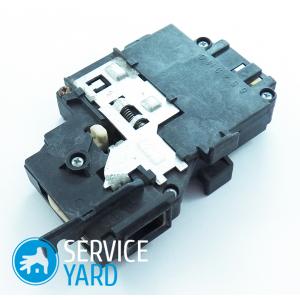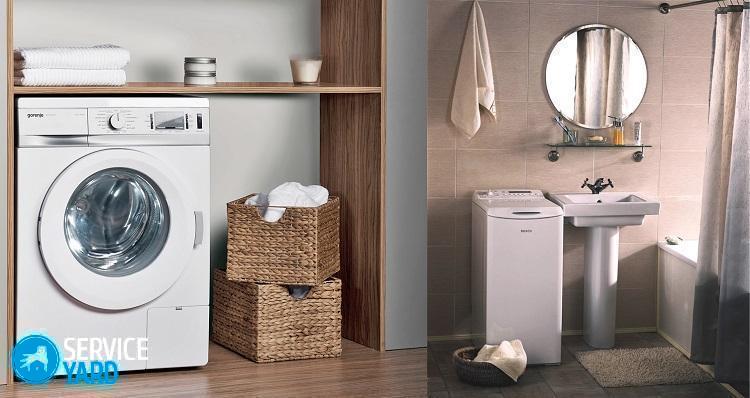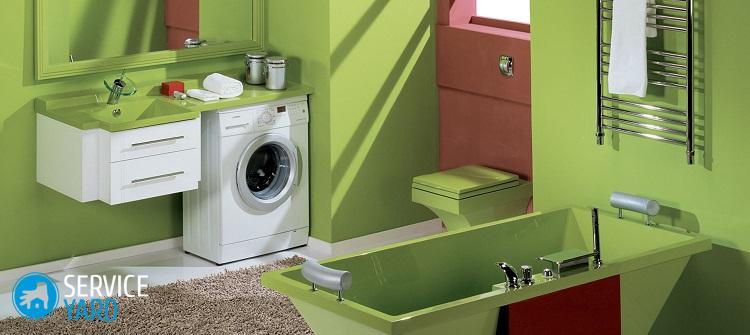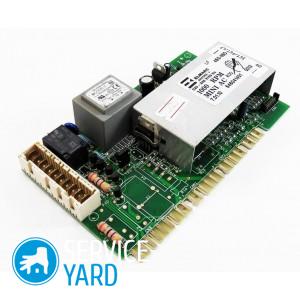Lock for washing machine

Have any of you, at least once in your life, thought about how many important elements a washing machine consists of? For example, a lock for a washing machine - it would seem nothing special, but no. If the lock fails, then there can be no question of any washing. Why so, and how to replace the lock for the washing machine, we will try to tell in this article.
to contents ↑The principle of operation of the hatch lock of the washing machine
The device for locking the hatch of an automatic machine based on a thermal lock operates very, very easily:
- Inside is a bimetallic plate, as well as a thermocouple, which is heated during the supply of voltage to it.
- Under the influence of heat, the bimetallic plate instantly heats up, bends and, using a special lock, blocks the door of the loading door.
- At the same time, the contact closes, which signals the control module that the door has really closed - then the selected wash program begins.
to contents ↑Important! This contact is an important part of the self-diagnosis system. If for some reason the sunroof lock could not work - either the sunroof was not properly closed or the thermocouple broke, the control module will display a corresponding error on the machine display.
Reasons for a delay in hatch unlocking
Usually, when the washing machine program is completed, the hatch does not open immediately, but after a few minutes. Why was this delay made? The thing is that after the program has stopped, the supply voltage is removed from the thermal lock. Due to this, stepwise cooling of the bimetallic plate occurs.
When its temperature reaches a certain value - it will take its original shape, pushes back the locks of the loading hatch - you can take out the laundry and send it to the linen thread or to the dryer.
Important! Based on what we described to you earlier, UBL washing machine is an extremely simple and durable design. And even with a power outage, after a few minutes, the lock for the washing machine will be automatically unlocked.
If an electromagnetic lock is installed inside the washing machine, the lock will be released only after the resumption of electricity supply - this is a drawback of locks of this type.
If the lock for the washing machine is broken, this process does not occur or does not occur correctly. As a result, you cannot open the hatch and pick up clean things.
The most common cause of failure - a bimetal plate has lost its properties. After a while, it is destroyed by constant heating, and after - and cooling. As a result of all this, its breakdown occurs, and the lock itself may well jam in a closed or open position.
Important! Often, users also have questions regarding the imbalance of the washing machine, its “jumping ability” or spontaneous shutdown during the spin cycle. As practice shows, most often the reason lies in improper operation.If you also had similar malfunctions, use our article to once and for all learn and remember all the rules for sorting clothes before washing and calculating the weight of clothes for washing in the machine.

How to check the UBL of a washing machine?
To check the hatch lock of the washing machine, you must find a suitable power source, and then connect this same source to the corresponding contacts. When the thermocouple receives voltage, the bimetallic plate will securely lock the lock - you should hear a characteristic click. If everything is ok with the lock, check the rest of the nodes.
For example:
- You must check the supply of the appropriate voltage from the control module. To do this, attach the tester probes directly to the contacts of the lock and run some program, while monitoring the presence of voltage.
- If there is no voltage, check the control module, as well as the UBL electrical circuits. How to do this is described in detail in the article. “CMA control module”.

Is it possible to run the washing machine program without UBL?
As previously mentioned, the design of the thermal lock has a special contact that relates to the diagnostic system of your automatic washing machine. As soon as it enters the closed position, the unit will understand that the loading hatch is securely locked, and you can proceed to start the washing program.
Important! You might also find it helpful to read about:
If the lock of the washing machine still breaks, it will transmit one of these two errors to the special electronic module:
- The hatch does not close;
- The lock is always locked.
In any of these cases, you will see a corresponding error on the display of your automatic machine.
Important! It is impossible to start the washing program without a WBL, because this contradicts all safety protocols. An unblocked hatch can be in the open state, which will lead to immediate flooding of the room, and at the same time - of your neighbors from below. Therefore, absolutely all washing programs are launched exclusively after the signal that the hatch is closed will be received.
But we can also generate this signal ourselves, simply closing the corresponding contacts.
Important! This action is valid only during testing of the washing machine. In real operation, this should never be done, especially since this process is very difficult.
The best option would be to replace the UBL and forget about the breakdown, because, among other things, thermal locks are characterized by their rather reasonable cost and do not constitute a scarce product.

Change the locking device for the hatch of the washing machine
Replacing the UBL washing machine with your own hands comes down to a complete replacement of the lock. Let's figure out how to replace the lock of the washing machine.
Change the lock on the open hatch
The description of the UBL replacement process must begin with the situation when you have the opportunity to open the hatch:
- Arm yourself with a screwdriver or pliers - it all depends on the design of the clamp, and then remove the clamp of the sealing rubber cuff.
- Carefully remove it and unscrew the two screws with a screwdriver - the caps of these screws are visible on different sides of the lock hole.
- After that, put your hand into the space that is between the tank, as well as the front wall, and take the lock out.
Important! To make it easier to remove the lock, you can tilt the washing housing back so that the heavy drum does not put pressure on the cuff.
- The lock itself changes quite simply - remove the connectors with wires, then connect the newly acquired lock to them.
- Next, install it in the place prescribed for it, and fix it with the screws.
- After that, return the cuff to its place, making every possible effort so that it is worn correctly.
- Lock the cuff with the removed clamp, and then perform a test wash.

What to do if the lock jammed in the closed position?
If you do not have access to the screws you just can not remove it. Therefore:
- Arm yourself with tools and remove the top cover of your washing machine.
- Tilt her case back and stretch your hand through the case and the drum - here you have to feel for the lock lock, and after that - move it to the open state.
- Once you have done this, open the hatch and proceed to the above procedure for replacing the UBL.
to contents ↑Important! Remember that any equipment must be taken care of in a timely manner, and do it very correctly. The most important points that most users of SMA have to deal with are discussed in detail in the articles:
Stock footage
Now you know how the lock of the washing machine is arranged, how it functions and why it may not open on time or break. We hope that even if the last thing happened to you, you could repair the UBL yourself without the help of a wizard.
- In what mode to wash t-shirts?
- What is the temperature at which to wash bedding 🥝 in a washing machine, how many degrees can be washed
- What mode to wash a jacket on a synthetic winterizer in the washing machine?
- How to wash jeans 🥝 in the car
- Laundry Weight for Laundry
- Washing machine control module
- How to clean the drain hose of the washing machine 🥝 yourself
- Washing Machine Prevention











